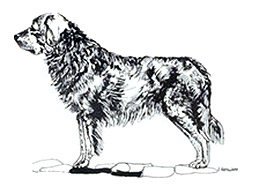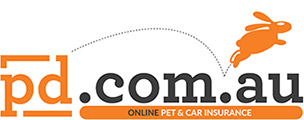Breed standards
Tatra Shepherd Dog
Breed standards are the official guidelines that describe the ideal characteristics, temperament, and appearance of a breed and ensures that the breed is fit for function with soundness essential.

Herder and watchdog. Its imposing attitude and beautiful appearance make it a good companion dog.
Of strong and compact build giving the impression of stamina and mobility.
IMPORTANT PROPORTIONS: Rectangular in shape, the length of the body of males being a little shorter than that of the bitches.
Not detailed.
Temperament calm, intelligent and alert.
HEAD: Lean, in good proportion to the body, carried at medium height both in movement and standing.
Skull: Seen in profile slightly rounded. The frontal groove is shallow.
Stop: Distinctly marked, but without abrupt break.
Nose: Black, of medium size, with nostrils wide open.
Muzzle: Strong, gradually tapering. Its length is slightly greater or equal to the length of the skull. The nasal bridge is broad.
Lips: Desirably taut and well fitting. The edges of the lips should be dark
Medium size, expressive, set slightly slanting, the iris is dark brown and the eyelid rims are dark.
Set on at the height of the external angle of the eyes or a little higher, medium length, rather thick, triangular and well furnished with hair. The front edge of the ear is in slight touch with the head and the auricle is mobile.
Teeth strong and regularly set. Scissor bite. Pincer bite is accepted.
Of medium length, muscular, without any dewlap, with a profuse mane. The upper line of the neck is higher than the topline of the body.
Forelegs muscular, with plenty of bone, but not too heavy. Seen from the front straight and parallel.
Shoulder-blade: Slightly sloping, well adapted to the body.
Pastern: Slightly sloping forward.
Long and massive.
Withers: Distinctly marked and broad.
Back: Level and broad.
Loins: Broad and well coupled.
Croup: Oblique and slightly sloping
Chest: Deep.
Ribs: Oblique and rather flat.
Belly: Slightly tucked up.
Viewed from the rear hind legs, vertical. Seen from the side slightly set backwards and moderately angulated.
Hock: Seen from the side, vertical.
Compact, oval in shape like a relatively big fist. With hairs between the toes. Pads strong, hard and dark, nails strong, blunt and dark.
Set on not too high, carried below the topline. When excited carried above the topline, but not curved. Hanging, it reaches the hock and the tip of the tail may be slightly curved.
Not detailed.
On head, muzzle, front part of forelegs and on the hindlegs from the hock downward the hair is short and dense. The neck and body are covered with long, thick, straight or slightly wavy hair which is hard to the touch. Undercoat profuse. On the neck a rich ruff and the thighs are covered with profuse, long hair. On the tail the hair is also profuse, forming a flag.
Uniformly white. Little cream coloured patches are undesirable.
Height at withers;
Males: 65-70 cms
Bitches: 60-65 cms
Any departure from the foregoing points should be considered a fault and the seriousness with which the fault should be regarded should be in exact proportion to its degree and its effect upon the health and welfare of the dog.
- Frontal furrow distinctly marked
- Poor pigmentation of nose, eyerims and lips.
- Light eye (called ‘bear eye’)
- Entropion
- Ears set high, directed backwards or cropped.
- Neck carried horizontal.
- Croup overbuilt.
- Tail carried constantly above the topline.
- Dewclaws.
- Lack of hair between the toes.
- Lack of ruff and lack of feathering on the legs.
ELIMINATING FAULTS:
- Aggressive or overly shy.
- Stop too shallow.
- Pointed muzzle.
- Several missing teeth.
- Over or undershot mouth.
- Ectropion.
- Hair curly or silky.
- Lack of undercoat.
- Coat with coloured patches.
- Nervous character.
Any dog clearly showing physical or behavioural abnormalities shall be disqualified.
N.B. Male animals should have two apparently normal testicles fully descended into the scrotum.



